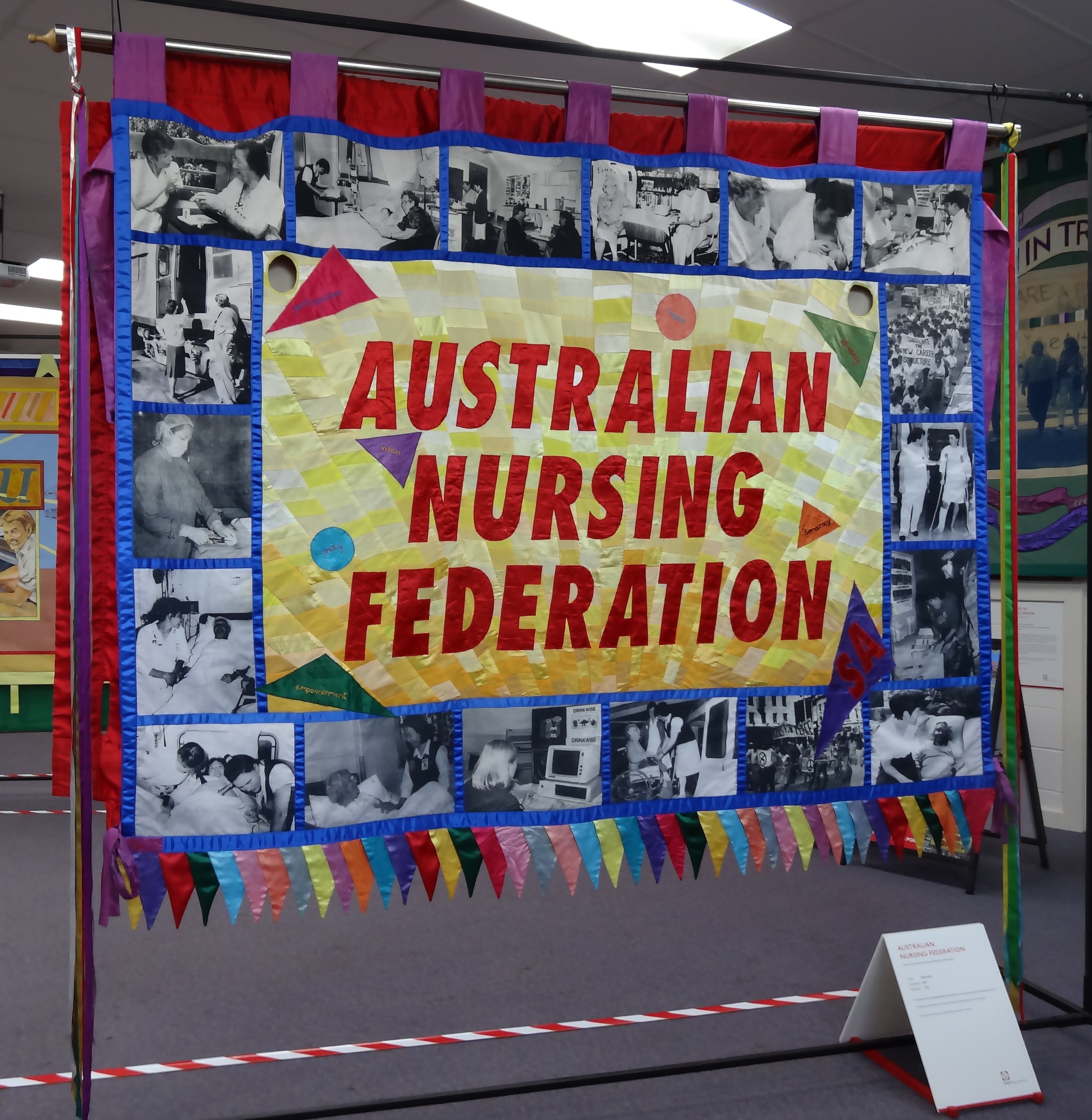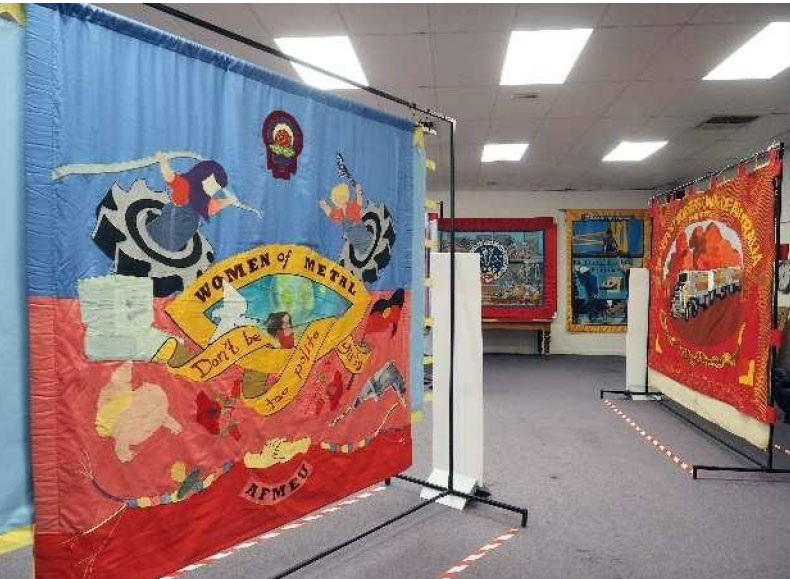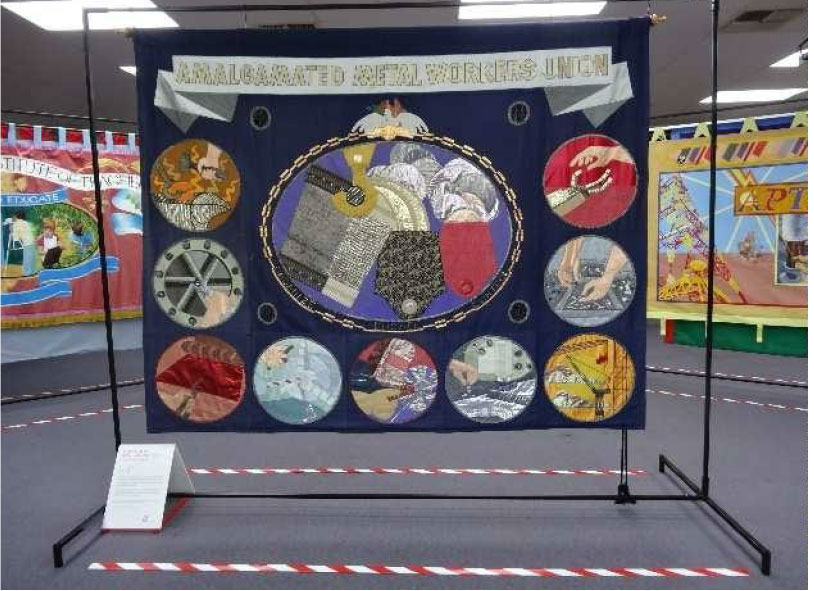27 July 2021
The banners unfurled by union movements drew plenty of admiration at a display back in May.

The ‘Marching for Justice’ trade union banner exhibition opened to the public at the Maritime Union Meeting Hall during the first three weekends of May 2021 as part of the special May Day events in Port Adelaide, including the celebration of the centenary of the Port Adelaide Workers Memorial.
The 31 banners and pennants on display were generously loaned by South Australian unions, including the ANMF, and the Working Women’s Centre. They came from far and wide – including two Timber Workers Union banners from the CFMEU Mt Gambier Office, and the banner of the Transport Workers Union SA/NT Branch from its Darwin Office.
The banners spoke of union diversity. They challenged narrow union stereotypes. Public and private sectors; blue, white and pink collar workers; essential services; and the Arts were all represented. Men and women workers, across low and higher paid occupations, featured. Impacts of overseas migration and language diversity were evident.

The dynamic nature of unions was illustrated in the banners and accompanying plaques. They revealed shifts over time arising from workforce and broader social changes, and union amalgamations.
Banner slogans speak of the hopes and aspirations of working people, not so much for individual success, but for the common good: ‘All Rights To Share. All Wrongs To Right’.
They shout out what unions stood and continue to stand for. The recognition of the need for unity is central: ‘Unity Is Strength’; ‘United We Stand’.
Slogans also show a broadening scope of concerns: ‘Childcare: A Right Not A Privilege’; ‘Keep People In Banking’; Working To Educate’.
Early banner slogans reflect a period when unionisation and accompanying industrial action were unlawful. To circumvent legal restrictions workers combined in Friendly Societies, pooling resources to provide support in the form of sickness and funeral benefits. The statement ‘Industry & Benevolence Unite Us In Friendship’ on the banner of the Amalgamated Society of Carpenters & Joiners illustrates this period.
By the late nineteenth century and with amended industrial legislation, banners spoke of an increasingly assertive class consciousness: ‘Abolish Wage Slavery’; No Surrender’. Calls for peace and socialism followed and persist: ‘Progress, Peace, Unity, Socialism’; ‘Building For Peace’.
Visitor comments focused not only on the beauty and skill of banner making, but also on labour history and what unions meant to them and their families.
Young activists, particularly from the Arts Workshops being run at the time by Vitalstatistix Theatre Company, were enthusiastic. The exhibition appeared to encourage their trade union understanding and commitment.

During the exhibition a number of visitors requested that it be recorded and made more broadly available via some form of publication. A website on which the exhibition could be viewed, and a small, printed publication for the public and archives, are now being investigated.
It is also proposed that any website showing the exhibition include the inventory as an updatable register of union banners made in and relating to unions in South Australia. Museum curators and researchers would also welcome this initiative.